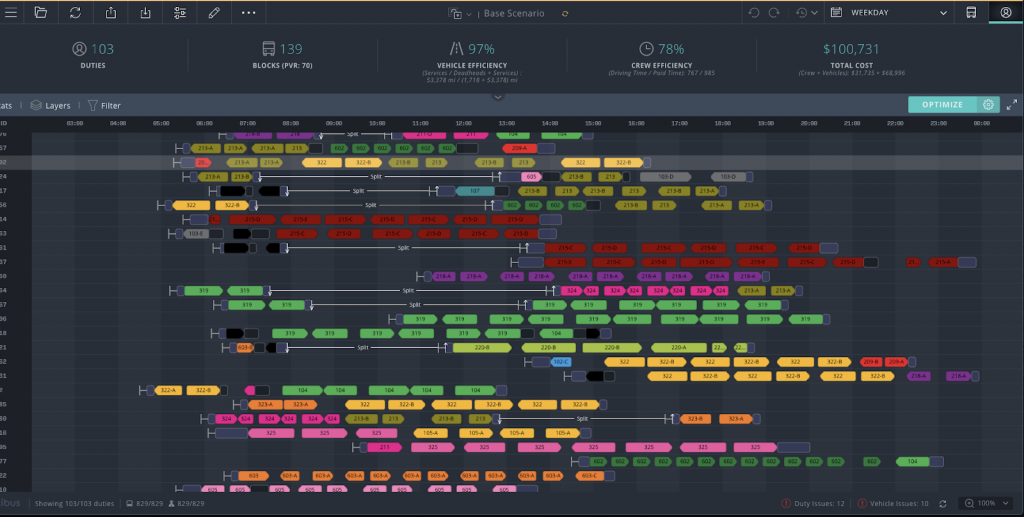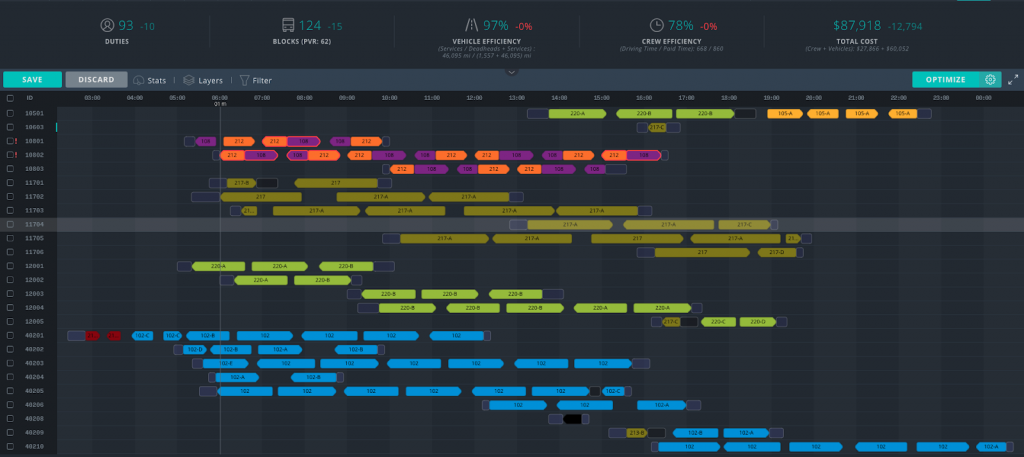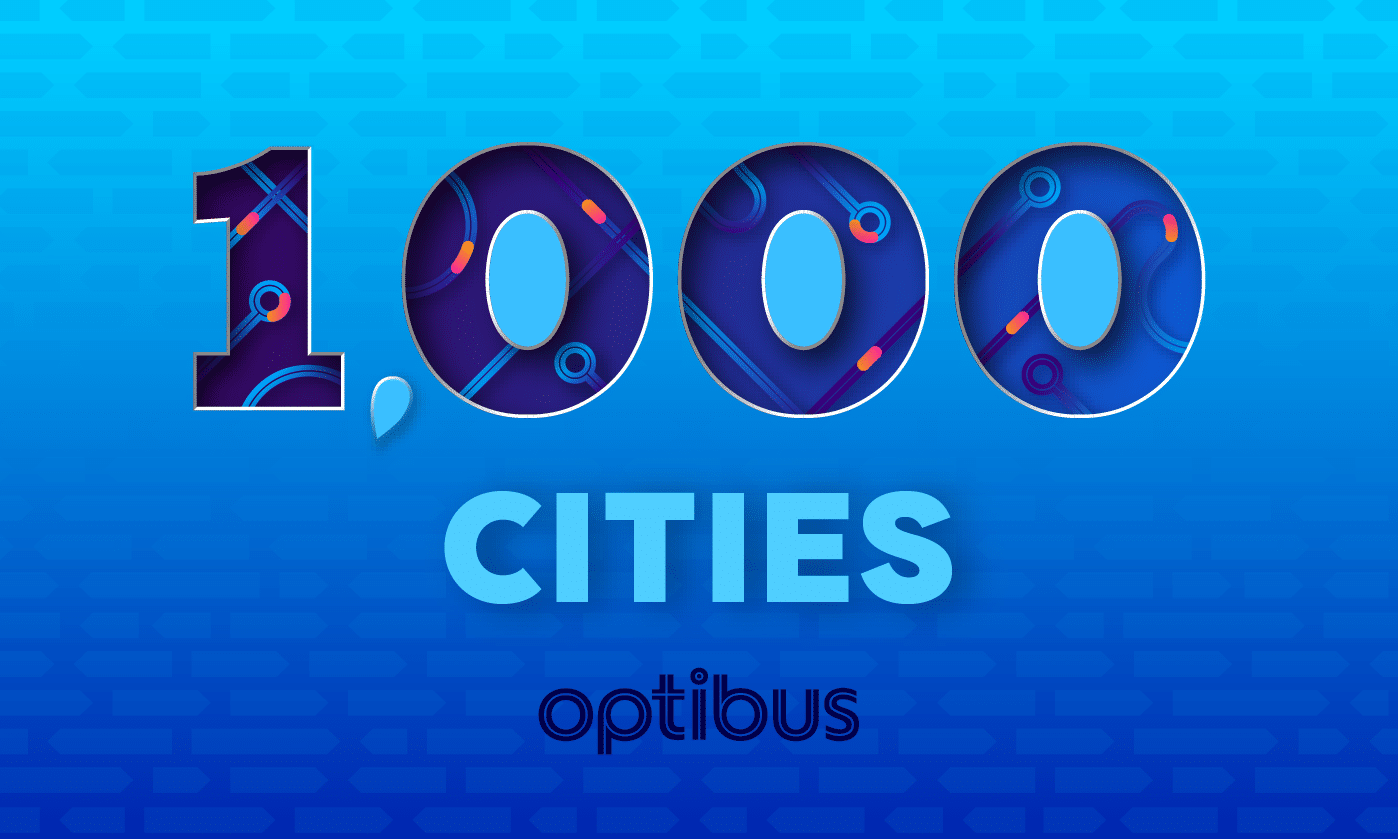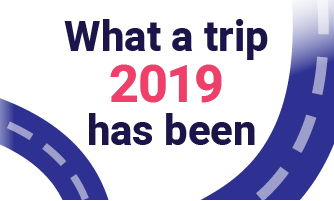With the COVID-19 virus disrupting the movement of people around the world, we’ve been getting requests from Optibus customers about how to prepare alternative service plans to deal with the challenges posed by the pandemic.
Hard decisions will need to be made about reducing service in ways that cause the least harm in the present, with an eye toward rebuilding a relationship with riders in the future. Contingency plans can help you figure out the best way to keep necessary transit service running while minimizing the spread of the virus and contending with expected drops in ridership and driver availability.
Here are guidelines on what to consider when preparing an alternative plan for reduced service. (To create an alternative plan on the Optibus platform at no cost, public transit agencies should email info@optibus.com with “COVID-19 contingency plans” in the subject line.)
Select the type of service to be reduced
Transit agencies and operators need to prepare for the prospect of drivers getting quarantined, falling ill or needing to minimize their exposure to the coronavirus. Of course, this will be extra difficult in places where there are preexisting driver shortages, but transit providers are nonetheless advised to create contingency plans with a 10% reduction in driver availability and with a steeper 25% reduction in driver availability.
There are multiple ways to reduce service, and in order to create an effective alternative service plan, you will have to select the ways in which service can be reduced while keeping public needs in mind. To create an effective plan, you will then have to try multiple scenarios depending on the factors you’ve selected.
Here are some major factors to consider when determining what elements of your schedule to change:
- Reduced coverage: Which routes serve important locations or a demographic that requires public transportation service that cannot be reduced? Experiment with changes to routes that don’t make the cut.
- Span of service: Which service hours make sense? Perhaps the service needs to stop earlier than possible, or perhaps some locations (e.g. hospital) require late-night service? Has ridership dropped suddenly and service needs to be changed?
- Frequency: As with span of service this can go both ways. Lower demand or fear of contamination can warrant service cuts, yet, on the other hand, a frequency increase can lower bus occupancy, in case the agency is tasked with ensuring low bus occupancy as a means of preventing contamination.
- Type of service: In case of shutdowns, do we keep school service, university services etc.
Let’s assume you’ve decided to remove some routes (e.g. routes serving a large college nearby that has reduced its operations). Using Optibus you can easily change the route frequency, span and more in the timetable module, or edit the route graphically, on a map. This is what it would look like:

Understand the vehicle and drivers required
Now you need to find out how many drivers are needed for the different service reduction scenarios you created. The timetable and route changes you’ve made will sync to the scheduling modules, so you can create vehicle schedules (blocks) and driver schedules (runcutting).
We then need to iterate and find the best schedules, while ensuring they are valid and compliant. This iterative process will allow us to create several different service scenarios and understand their impact.
To begin checking how many drivers are needed for each scenario, we will now sync the timetable with the reduced service to the scheduling modules of Optibus, to easily create vehicle and crew scheduling.
Here are the crew KPIs for the current service, before the reduction. You can see that 103 drivers are required to perform the service.

Now, let’s sync the new timetable we’ve created with the service reduction with the scheduling module.
Let’s also ensure that the same work rules apply.
Now, let’s optimize the new schedule and see how many drivers are required. This will take a minute or two. Note that with a service reduction you may want to create one scenario with fewer shifts or another that has shorter shifts, in case you are providing less service but most drivers are still willing and able to work.
In this example, the removal of one route reduced 10 drivers and 15 buses, but we can continue running these iterations until we get to a 25% reduction or whatever goal we have.

If service changes frequently, you may want to create new rosters every week, to enable more flexibility for drivers as the world around them changes.
One more important factor to consider is that a drop in public transportation use also means a drop in the sources of funding, and fears of a precarious financial situation for many agencies. Using scheduling optimization platforms can help control the situation by ensuring resources are used wisely.
Related articles:
Helping Transit Agencies Prepare for COVID-19 With No-Cost Contingency Plans







